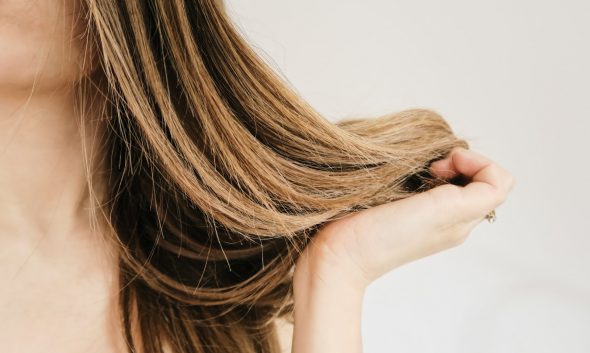How to Choose a Hair Oil Respecting your Hair Porosity?

A hair oil which matches a hair type works like a bandage. It repairs, reinforces and beautifies the hair, as well as protects from damage. If we wish to have incredibly beautiful hair, let’s start applying hair oils. Do you know how to get round to it?
Define your hair type
1. Identify your hair type before applying a hair oil treatment. Only choosing the right oil for the hair porosity (condition) can bring desired results. Generally speaking, there are three basic hair types:
- low porosity hair – thick, straight, lacking volume,
- medium porosity hair – weak, dry, dull,
- high porosity hair – damaged, brittle, splitting.
2. Do a hair porosity test available on the website of Nanoil hair oils to easily define your hair type. All you need to do is answer a few questions about the appearance of hair and the way you care for your hairdo. Doing a test takes only 1-2 minutes and we get a clear prompt which helps us discover our hair porosity.
3. See a trichologist and have a trichoscopy done if you want to be sure what type of porosity your hair has. The trichoscopy allows for a non-invasive scalp and hair examination at a 20-fold or even 70-fold magnification.
4. Define your hair porosity with home methods, for example, by throwing a hair into a glass of water. The lower the porosity – the tighter the external cuticle layer and the worse the absorption of water. Put a hair in a glass of clear water and observe how it behaves:
- if it floats on the surface long, it has low porosity,
- if it slowly sinks to the bottom, it has medium porosity,
- if it immediately reaches the bottom, it has high porosity.
Be careful! Defining the hair porosity with the water test is the least reliable method. The results are disturbed by the tension of water, product build-up on hair and the fact that hair roots, lengths and ends can have a different type of porosity.
Choose a suitable hair oil
1. Do you have low porosity hair? Pick oils which are mostly made up of saturated fatty acids – so-called non-drying, penetrating oils. They have tiny molecules so they ideally suit the hair which has a tightly-bound cuticle layer and low porosity. Recommended oils for low porosity hair include:
- coconut oil,
- babassu oil,
- shea butter,
- cupuacu butter.
2. Does your hair have medium porosity? Go for oils with a large amount of monounsaturated fatty acids (omega-7 and omega-9) – so-called semi-drying, semi-penetrating oils. The best oils for medium porosity hair include:
- jojoba oil,
- macadamia oil,
- marula oil,
- sunflower oil.
3. Do you have high porosity hair? Make sure you have oils that are largely made up of polyunsaturated fatty acids (omega-3 and omega-6) – so-called drying, non-penetrating oils. They have quite large molecules which match the weak hair structure. Ideal oils for high porosity hair include:
- argan oil,
- almond oil,
- evening primrose oil,
- avocado oil.
4. Give Nanoil hair oils a try if you are looking for a professional solution and do not feel like preparing a DIY mixture of natural oils. These are the first oils on the market which go along with the porosity of hair. They offer a composition of the best natural oils, in the right proportions, enriched with vitamins and ingredients that are essential for hair. Nanoil hair oils come in three versions for low, medium and high porosity hair.
Match the right hair oiling method
1. Decide if you want to apply oils to wet or dry hair. The action of oils depends on the method of hair oiling you pick. Therefore, two most popular methods include:
- dry hair oil treatment – applying an oil to dry hair,
- wet hair oil treatment – applying an oil to damp hair.
2. Do a hot oil hair treatment for more intensive effects. A different temperature of an oil gives completely different results. The warmer the oil, the better the absorption. You can also try a hair steam treatment which intensifies the performance of hair oils and makes them act deeply. Considering the temperature, there is:
- hot oil hair treatment,
- a combination of a hair oil treatment and steaming.
3. Apply an oil to your scalp and massage it in. The scalp requires nutrients which are delivered by oils, making hair bulbs stronger and full of vitality. All above-mentioned methods can be successfully mixed so feel free to apply oils to different areas: to scalp only, to scalp and lengths of hair, to lengths only or exclusively to hair ends.





Leave a Reply